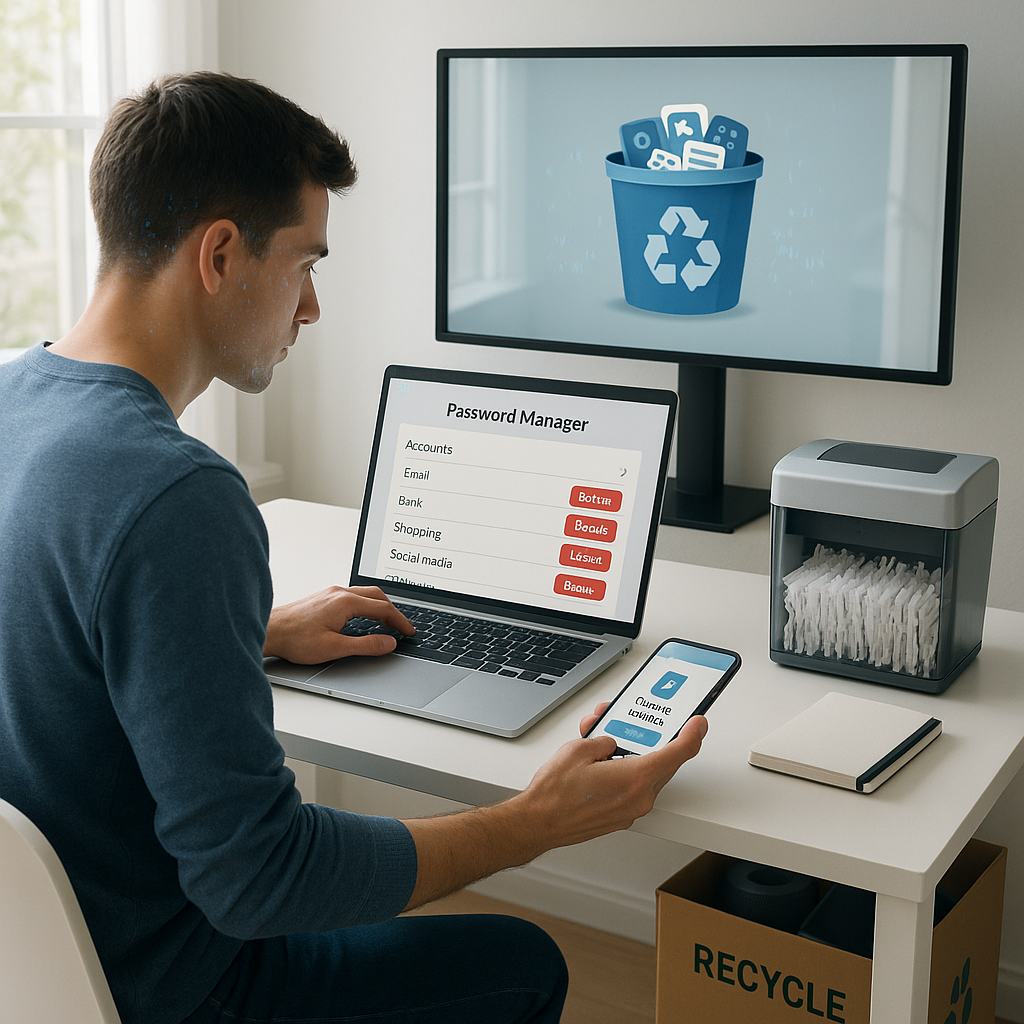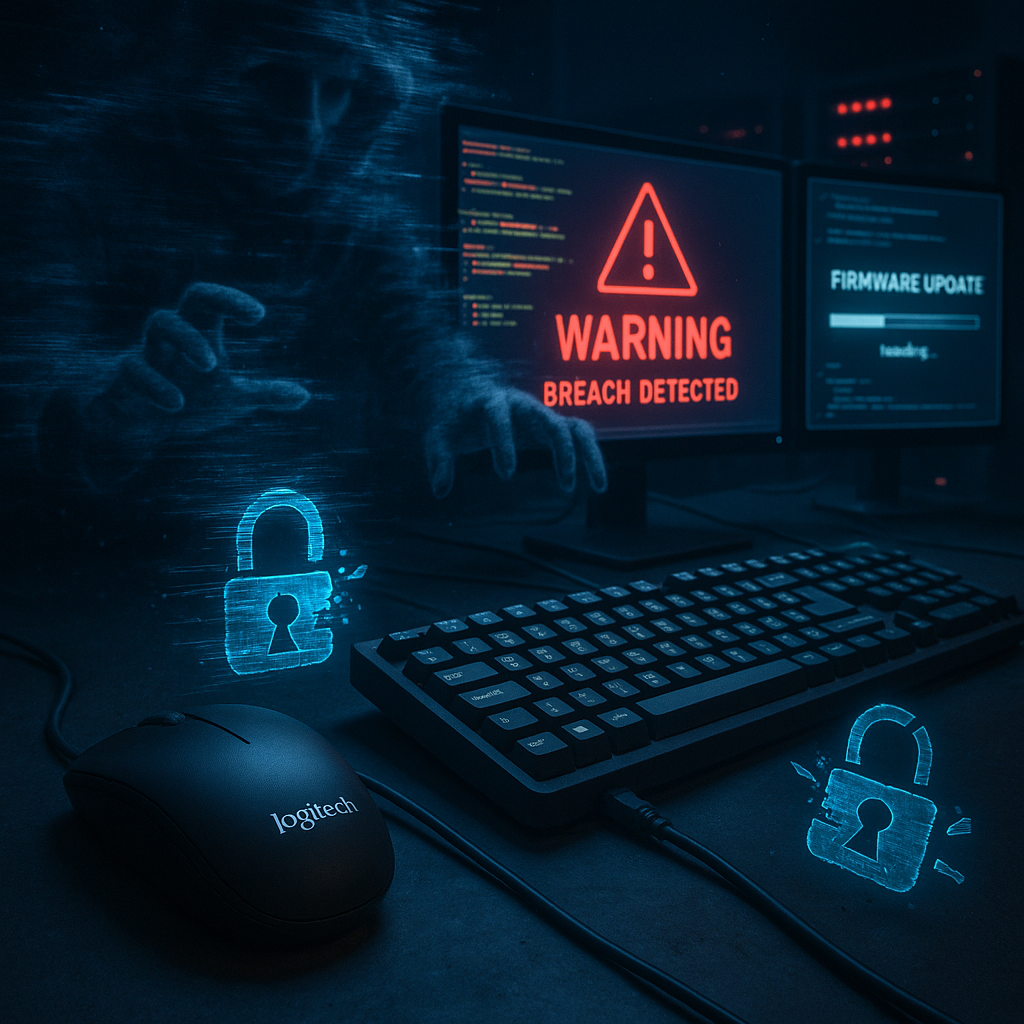Key Takeaways
In today’s hyperconnected world, digital minimalism is far more than a matter of tidying up files. It is a proactive strategy designed to boost your cybersecurity and safeguard your privacy. By consciously reducing digital clutter, you eliminate hidden security risks and build a strong, privacy-focused tech routine that is easy to maintain. Here are the key takeaways that demonstrate how digital minimalism can directly empower your cyber defenses:
- Shrink your attack surface by decluttering: Every unused account, outdated app, or forgotten file is a potential gateway for attackers. By systematically identifying and removing them, you significantly reduce your vulnerability to cyber threats.
- Limit data exposure by reducing platforms and devices: Maintaining fewer online accounts, apps, and connected devices means there is less sensitive information for hackers to exploit or leak in the event of a breach.
- Strengthen privacy through intentional tech use: By limiting your use of digital tools and subscriptions, you ensure that only trusted, essential services have access to your data.
- Combat phishing and malware through digital simplicity: Keeping your inbox, contacts, and online presence streamlined makes it much more difficult for attackers to target you with scams and malicious links.
- Enhance productivity without sacrificing security: A streamlined set of digital tools means faster updates, less maintenance, and focused workflow. All this improves your cybersecurity through reduced complexity.
- Empower non-techies to secure their digital lives: Simplifying your digital environment demystifies cybersecurity, making it possible for anyone to implement effective protections without advanced technical knowledge.
- Reinforce protection through ongoing decluttering: Regularly auditing and cleaning up your digital assets encourages a culture of security mindfulness, helping you recognize and address risks before they escalate.
Choosing digital minimalism is more than an organizational choice. It is an intelligent, user-centric defense against evolving cyber threats. In the following sections, you will discover guiding principles, practical steps, and powerful privacy benefits that come from embracing a minimalist approach to your digital world.
Introduction
Every unused app, neglected account, or old device quietly increases your susceptibility to cyber risks. Digital minimalism offers a holistic solution. By intentionally decluttering your technology landscape, you don’t just stay organized; you take strong, proactive steps to enhance your cybersecurity and reclaim your control over personal privacy.
With fewer accounts, files, and devices, hackers have fewer angles to launch attacks, and your data becomes less likely to be caught in the fallout of breaches or leaks. Digital minimalism transforms security from a daunting technical challenge to a set of manageable habits, empowering anyone (regardless of tech expertise) to reduce their attack surface and shore up privacy protections.
Un passo avanti. Sempre.
Unisciti al nostro canale Telegram per ricevere
aggiornamenti mirati, notizie selezionate e contenuti che fanno davvero la differenza.
Zero distrazioni, solo ciò che conta.
 Entra nel Canale
Entra nel Canale
As you consider stepping into a minimalist digital lifestyle, let’s explore how this approach can make your devices safer, your data more private, and your daily routines stronger against the shifting landscape of cyber threats.
Understanding Digital Minimalism in Cybersecurity
Digital minimalism is not just a trend. It is a deliberate strategy designed to reduce your digital footprint in ways that meaningfully enhance your cybersecurity. At its heart, digital minimalism in cybersecurity means keeping only the essential digital tools, accounts, apps, and data. This creates fewer entry points for cyber criminals and streamlines your security oversight.
The Security Dangers of Digital Clutter
Every digital asset you maintain (be it an old social media account, an unused phone app, an outdated cloud storage folder, or even a dormant email inbox) represents a potential vulnerability. Here is how digital clutter breeds risk:
- Forgotten accounts tend to miss critical security patches: Inactive accounts may not benefit from regular updates, leaving them open to new exploits.
- Password recycling increases the knock-on effect of breaches: Juggling dozens of accounts often leads to reusing passwords. One breach can compromise multiple services.
- Outdated apps hide unpatched weaknesses: Unused software can contain security flaws, offering easy entry for hackers.
- Widespread data storage complicates control: With data scattered across platforms, tracking and securing personal information becomes more difficult, raising the stakes of breaches.
Research from IBM’s X-Force team reveals that organizations with complex, cluttered IT environments suffer breaches at a 52% higher cost than those with streamlined systems. While these findings target businesses, the lesson applies just as well to everyday users. Complexity widens the attack surface.
The Benefits of Minimalist Security
Investing in digital minimalism offers distinct, tangible benefits:
- Focused attention on critical assets: Maintaining fewer digital tools means you can monitor them more closely and ensure robust protection.
- Reduced exposure to sudden new threats: Having only essential apps minimizes your vulnerability to newly discovered zero-day exploits.
- Easier update management: With fewer applications and devices to oversee, keeping everything up to date becomes less time-consuming.
- Faster detection of suspicious activity: A tidy digital environment makes anomalies stand out, improving your response time to attacks.
Notably, a Kaspersky survey found that 73% of consumers hold onto unused accounts, each one representing a forgotten security risk. By adopting digital minimalism, you directly address these hidden vulnerabilities. Next, we’ll discuss how to spot and prioritize the digital assets in your life that most urgently require decluttering for optimal security.
Identifying Digital Clutter That Compromises Security
To begin your journey toward digital minimalism and improved cybersecurity, you must first identify which parts of your digital world pose the greatest risks. Conducting a thorough audit of your digital footprint lets you prioritize your decluttering efforts for maximum impact.
Auditing Your Digital Presence
Start with a comprehensive inventory across these categories:
- Account Inventory: List every online account you have, covering email, shopping, social media, streaming, finance, work, and subscription services. Use resources like Have I Been Pwned or a password manager to unearth forgotten accounts.
- Application Assessment: Catalogue all software installed across your devices, including computers, smartphones, and tablets. Note which are rarely used. Studies suggest the average person uses only 10–15% of installed apps regularly.
- Device Census: List all connected devices, from primary computers and phones to smart home gadgets and storage devices, especially noting those seldom used.
- Data Storage Mapping: Identify where your highly sensitive data lives—cloud storage, local hard drives, external storage devices, USBs, and even old email accounts with attachments.
- Digital Communication Channels: Review every platform you use for communication: email, instant messaging, social platforms, and project management tools.
Assessing Security Risks
While auditing, evaluate the real-world risk each item poses:
- Length of inactivity: Accounts unused for over six months tend to be the most at risk for neglect.
- Type of stored or accessible information: Financial, health, and personal details require highest protection.
- Software update status: Outdated software can be easily exploited until patched.
- Authentication robustness: Accounts lacking two-factor authentication or using recycled passwords deserve urgent attention.
- Privacy policy changes: Services that have changed owners or updated their privacy policies may have altered their data security standards.
cyber hygiene practices can help you build these assessments into your regular routines, making ongoing security maintenance second nature.
High-Risk Red Flags
Spot and promptly address these conditions:
- Accounts on compromised services: Any account associated with a known breach needs immediate focus.
- Devices without current security support: Older hardware often loses security update eligibility, making it a soft target.
- Apps demanding excessive permissions: Uninstall or replace apps that collect more data than their function requires.
- Multiple backup copies of sensitive documents: Redundant storage, especially in the cloud, increases data exposure risks.
- Legacy email accounts tied to modern services: Old emails often hold critical security information that could be leveraged by attackers.
The dangers of overlooked digital clutter are reflected in studies by the Identity Theft Resource Center. Over 70% of identity theft incidents stem from exposure via long-forgotten or minimally monitored accounts. As we proceed, we’ll focus on effective strategies for decisively eliminating these vulnerabilities from your digital environment.
Strategic Digital Decluttering for Enhanced Security
After identifying the facets of your digital world most at risk, it’s time to methodically declutter and reduce your exposure. Digital decluttering is not simple spring cleaning; it is the active closure of security gaps.
Systematic Closure of Unused Accounts
Take these proactive steps to securely close unused or obsolete accounts:
- Prioritize by risk: Close accounts that store or access any financial, health, or private information that you no longer need.
- Archive important data: Before closing accounts, retrieve and archive any documents or materials you wish to keep.
- Use direct deletion links: Many services make account deletion obscure. Sites like JustDeleteMe.xyz can direct you to the proper removal process.
- Follow up post-closure: Revisit closed accounts after the stipulated period to ensure deletion is complete.
- Update your records: Remove defunct accounts from your password manager and update any linked services.
Properly closing, rather than abandoning, online accounts is essential. Research from the Ponemon Institute demonstrates that nearly 40% of data breaches involve credentials from forgotten or poorly decommissioned accounts.
Pruning Unnecessary Applications
Trim the risk posed by unused applications:
Un passo avanti. Sempre.
Unisciti al nostro canale Telegram per ricevere
aggiornamenti mirati, notizie selezionate e contenuti che fanno davvero la differenza.
Zero distrazioni, solo ciò che conta.
 Entra nel Canale
Entra nel Canale
- Apply the 90-day rule: Uninstall any application not used in the past three months, unless it serves a valid intermittently used function.
- Vet for vulnerabilities: Research apps for recent vulnerabilities before deciding whether to keep or remove them.
- Uninstall via official channels: Ensure complete removal by using the device or official app store’s tool, which often also removes residual data.
- Revoke third-party app connections: Go to your main accounts (such as Google or Facebook) and disconnect any apps you’re no longer using.
- Maintain approved app lists: For business and education settings, keep an ongoing list of authorized and mission-critical applications to keep shadow IT in check.
For more in-depth ideas, see expert-endorsed digital declutter methods that help you maintain long-term focus and productivity.
Managing Device Lifecycles
Minimize the security threat of outdated or redundant devices by:
- Properly retiring devices: Back up essential information, then perform a full factory reset or secure erase before recycling or donating.
- Overwriting storage: Use secure deletion programs to remove traces from hard drives, SSDs, and flash memory.
- Test for data recovery resistance: Ensure deleted data is irrecoverable with available recovery tools or seek professional disposal for highly sensitive equipment.
- Repurpose with caution: Retask old hardware for highly limited use cases (e.g., as offline media players) with minimized account exposure.
- Keep a disposal log: Record which devices were disposed of and when, maintaining a chain of custody for sensitive information.
Streamlining Data Storage
Organize your storage systems with both efficiency and security in mind:
- Adopt the 3-2-1 backup rule: Maintain three copies of vital data, stored on two different types of media, with one stored off-site, to minimize both loss and clutter.
- Centralize sensitive files: Limit important documents to a single, secure location with strict access controls.
- Eliminate redundant cloud copies: Remove unneeded duplicates or outdated versions of important files from various cloud services.
- Routinely clear download folders: Schedule a monthly purge of files. Download folders often gather confidential documents that no longer need to be retained.
- Audit storage in communication platforms: Clean out email attachments, chat files, and cloud-linked project folders to avoid uncontrolled data accumulation.
Taking these deliberate, thorough steps will not only make your digital life more manageable but will also seal many security gaps that are easily overlooked. Looking ahead, let’s focus on making digital minimalism a lasting habit that powers ongoing security.
Establishing Digital Minimalism as a Long-Term Security Practice
Moving from a one-time digital declutter to a lasting security strategy requires turning minimalism into an ongoing, built-in aspect of your tech habits. Here are the steps to lock in these gains and ensure future resilience:
Embrace Intentional Technology Adoption
Before adding new devices, accounts, or apps, pause to consider their necessity, the sensitivity of information they access, and their security implications. This step keeps digital bloat from gradually returning and ensures your tech ecosystem stays lean and protected.
Schedule Regular Digital Security Audits
Set a quarterly or bi-annual reminder to review your digital inventory. Use this as an opportunity to spot unused apps, update security settings, change passwords, and remove any new clutter. Over time, these small maintenance moments transform into a natural part of your digital hygiene.
For a daily-security checklist to incorporate into your routine, check out the Cyber Hygiene Checklist.
Use Automation Wisely
Leverage the automation capabilities of password managers, device management software, and cloud storage dashboards to highlight inactivity or vulnerabilities. For example, some password managers now notify you about unused accounts and potentially compromised logins.
Build a Culture of Minimalist Security
Spread awareness among family, friends, colleagues, or fellow students. Provide checklists and how-to resources to help others experience the empowerment of digital minimalism, whether at home, in education, or in business environments where every user’s practices contribute to collective security.
Respond Rapidly to Emerging Threats
With a compact digital footprint, you are in a much stronger position to respond quickly to news of data breaches, vulnerabilities, or platform changes. Conduct immediate audits of any at-risk services or devices, and take decisive action. Close, update, or tighten security settings as needed.
Industry and Sector Applications
The principles of digital minimalism are universally applicable across various sectors, not just for individual users:
- Healthcare: Simplifying data storage and limiting access points helps comply with patient privacy laws and reduce patient record breaches.
- Finance: Reducing the number of financial platforms and outdated accounts curbs exposure to fraud and streamlines compliance.
- Education: Schools and universities can shrink their attack surfaces by consolidating student data systems and removing unnecessary legacy platforms.
- Legal: Law firms protect sensitive client information by decluttering inactive case management accounts and archiving only what’s strictly necessary.
- Marketing: Limiting online service accounts and tools reduces customer data exposure, especially important amid rising privacy regulations.
- Environmental Science: Minimalist digital strategies streamline data handling and boost the security of research databases sharing sensitive findings.
- Retail & E-commerce: Regular purges of old inventory and customer accounts lower the risks of large-scale data breaches.
- Consumer Behavior Research: Focusing data collection efforts ensures only purposeful, security-conscious insights are gathered and retained.
No matter your field, digital minimalism supports not only personal privacy but also regulatory compliance and organizational resilience.
Conclusion
Digital minimalism is more than an organizational framework. It is a potent, strategic shield for safeguarding your privacy in a rapidly expanding digital landscape. By systematically auditing and streamlining your digital life—removing old accounts, pruning unused apps, securely managing devices, and consolidating sensitive data—you actively close security gaps and reduce your exposure to both common and advanced cyber threats.
For further insights on maintaining balance and intention with your technology use, get expert perspectives on digital minimalism and how it can power focused living.
The true strength of digital minimalism lies in its capacity to empower everyone, from tech newcomers to seasoned professionals, with practical, achievable habits that significantly improve cybersecurity. As our digital environments continue to grow in complexity, those who proactively adopt minimalist, intentional practices will be best equipped to maintain privacy, avoid data loss, and adapt confidently to new security challenges.
The future belongs to those who can anticipate digital risks and act decisively. Transforming technical clutter into confidence, and uncertainty into peace of mind. By starting your digital decluttering journey today, you are not only investing in your own security, but setting a new standard for resilience in the digital age.




Leave a Reply